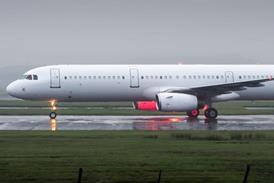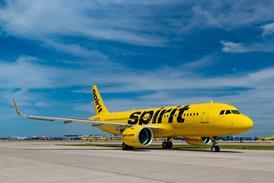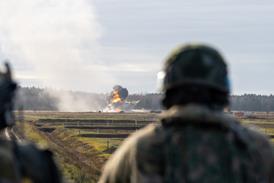Optimism is already starting to return in aircraft markets as traffic continues to rise, but whether carriers can actually afford to add new capacity is another matter, writes Chris Tarry of CTAIRA
A consensus appears to be emerging among analysts in the aerospace manufacturing sector that the airline industry has reached "a point of inflexion" - the worst is over and this is likely to herald a recovery in orders. No doubt this view is reinforced by the news from both Airbus and Boeing that they are increasing their production rates. Traffic growth and rising load factors have again been interpreted as the physical precursors to a recovery in orders. But although both these factors have been leading indicators in the past, there are significant differences this time round.
While traffic may indeed be moving back to, or even ahead of, the peak levels of 2000, it is worth remembering that the world's jet fleet at the end of last year contained some 2,000 more aircraft than three years earlier. Although there has been an increase in the number of parked aircraft, the reality is that excess capacity has increased, adding further downward pressure on yields. It is worth remembering that although traffic growth is important, it is revenue that is crucial in determining whether airlines can afford new aircraft - coupled with the discounts that sellers are prepared to give.
Admittedly, traffic does appear to have rebounded in the main regions after the crises of the past three years. International traffic for both US and European carriers is now above 2001 levels, while the Asian airlines have recovered from SARS - a shock that appears to have had the same percentage impact in Asia as 9/11 and the Iraq war had in the West.
Over this period, the rise of the new model airlines, particularly in Europe, has had a dramatic effect - boosting traffic but also pushing down average fare levels. The Association of European Airlines (AEA) says its members posted traffic growth of just 1.4% last year. But add in figures from easyJet and Ryanair and the growth rises to 6%. In other words, these two low-cost carriers posted the equivalent of three times the increase recorded by AEA airlines as a whole.
What is clear is the consequence of the structural change in traffic - particularly on short haul, with the migration to the back of the aircraft of mainline airline and travel buyers availing themselves of a range of cheaper fares. Latest figures from the AEA show the extent of the swing - a trend that will be inevitable wherever a new start-up appears.
An extreme example is SAS, which has seen business-class travellers on intra-European routes fall by 44.7% between 2001 and 2003, representing the loss of nearly 1.8 million passengers. This compares with an absolute fall of 864,000 at British Airways (27.6%) and just over a million (21.7%) at Lufthansa. These trends are unlikely to reverse.
Warnings by at least one low-cost chief executive of an impending bloodbath may be overstated, but what is clear is that there is a real prospect of further tightening in financial forecasts. And in future, low-cost growth may increasingly flow more from the need to place significant numbers of new aircraft rather than from the actual level of demand to travel, or at least demand at the price levels that were forecast when orders were placed.
So back to the question of traffic demand. Asia has now undoubtedly returned to profitable traffic growth. Although there has been an upsurge in low-cost activity in the region, its near-term effects are likely to be slight and although challenges remain for Asian airlines in the region, the starting point is more favourable than for most of the rest of the industry.
In Europe, airline analysts have begun to reduce their forecasts, although overall the industry in this region will be profitable this year. The major change in Europe is in the outlook for the "low-cost" carriers. Meanwhile, in the USA there is an expectation that some 40% of the industry will be operating under bankruptcy protection in early 2005, and elsewhere Southwest has revisited its growth plans.
From a traffic perspective, a recovery is undoubtedly under way but this time the lag in recovery of profitability will inevitably be greater and although most recently the fuel price rise has taken its toll, structural issues remain to be resolved.
While new entrants took advantage of attractive aircraft prices in 2002 and 2003, which resulted in orders holding up better than might be expected, a real recovery in orders in the near term may remain elusive.
In terms of traffic and financial performance, the Asian region remains the area of greatest opportunity - but that is nothing new. The key issue may be whether a near-term double dip in orders is avoided and whether the price for avoiding it is some highly attractive deals on new aircraft.
Whatever the outcome, it does little to change the basic situation that traffic may be necessary but is not a big enough factor to bring in the cash - and it is the cash that remains fundamental.
Source: Airline Business























